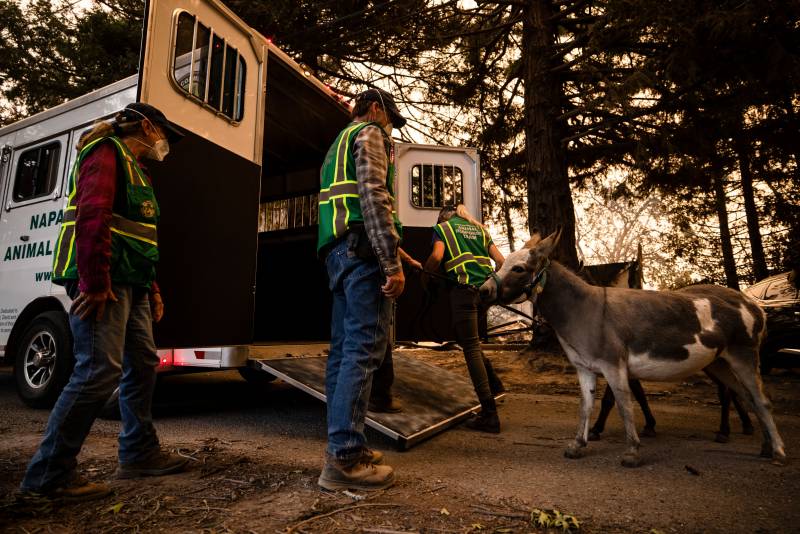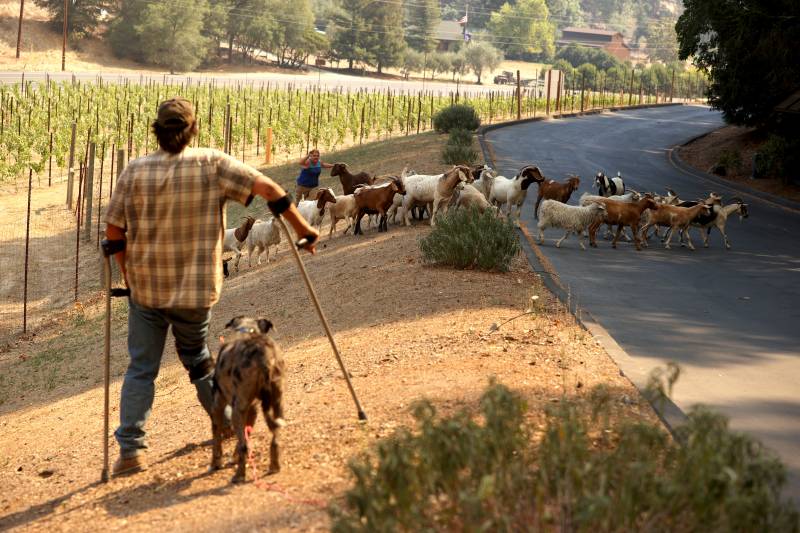This story is no longer being updated. Please visit kqed.org/wildfires for our latest wildfire-related stories and guides.
When wildfires force the evacuation of thousands of people, many have to make the difficult decision of whether to bring their animals or leave them behind. And when fire spreads rapidly, some residents don’t have the time or means to evacuate pets and livestock.
In the North Bay, that’s where local organizations like the Napa Community Animal Response Team (CART) step in. CART volunteers travel behind evacuation lines to rescue pets and livestock, coordinate donations of feed and supplies and care for animals staying in shelters.
Dr. Claudia Sonder, president of Napa CART and an equine veterinarian, told KQED during the Glass Fire in 2020 that planning ahead is crucial.
“We talk about humans being prepared for disaster, but we don’t often talk about preparing your animals for disaster,” she said.
Preparing for evacuation
Here are a few things you can do to prepare your animals before evacuating:
- Make an evacuation plan for livestock and practice evacuating more than once ahead of time.
- Fill out a luggage tag with the animal’s name and your contact information; the tag can be braided into a horse’s mane and attached to a horn or ear tag.
- Prepare a go-bag for your pets and livestock with: food for at least three days; leashes, halters or harnesses; medication; your vet’s contact information; and instructions for feeding and any medical needs.
- Microchip your pets, and make sure the microchip contact information is up to date.
- Be sure to have photos of your animals for identification purposes.


